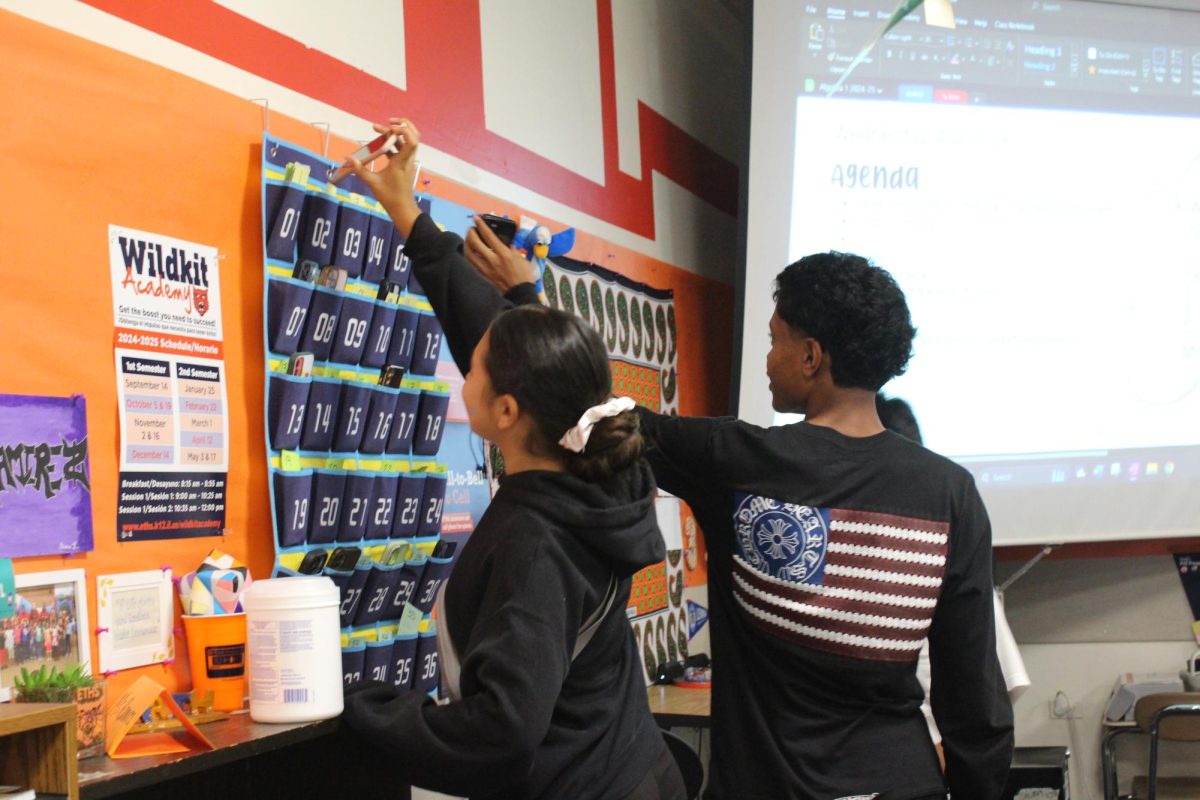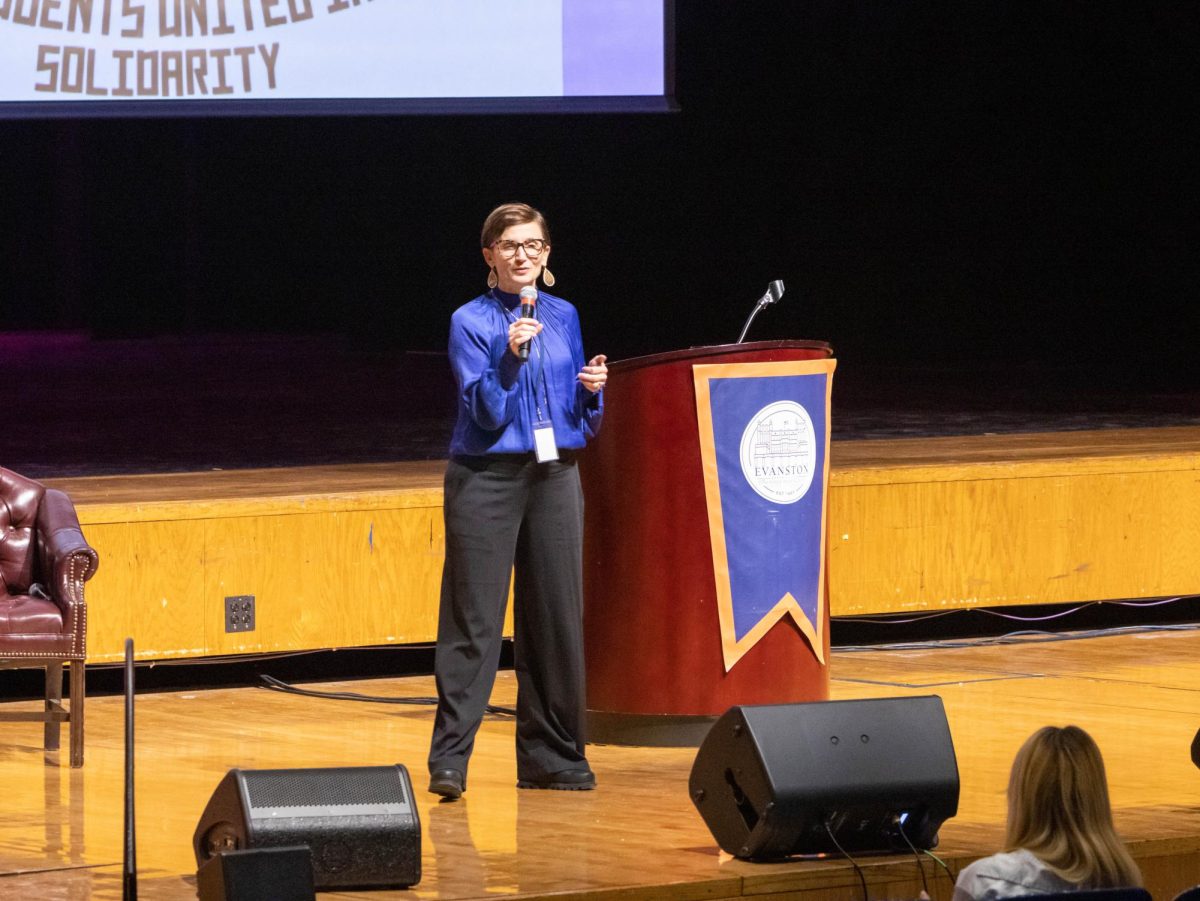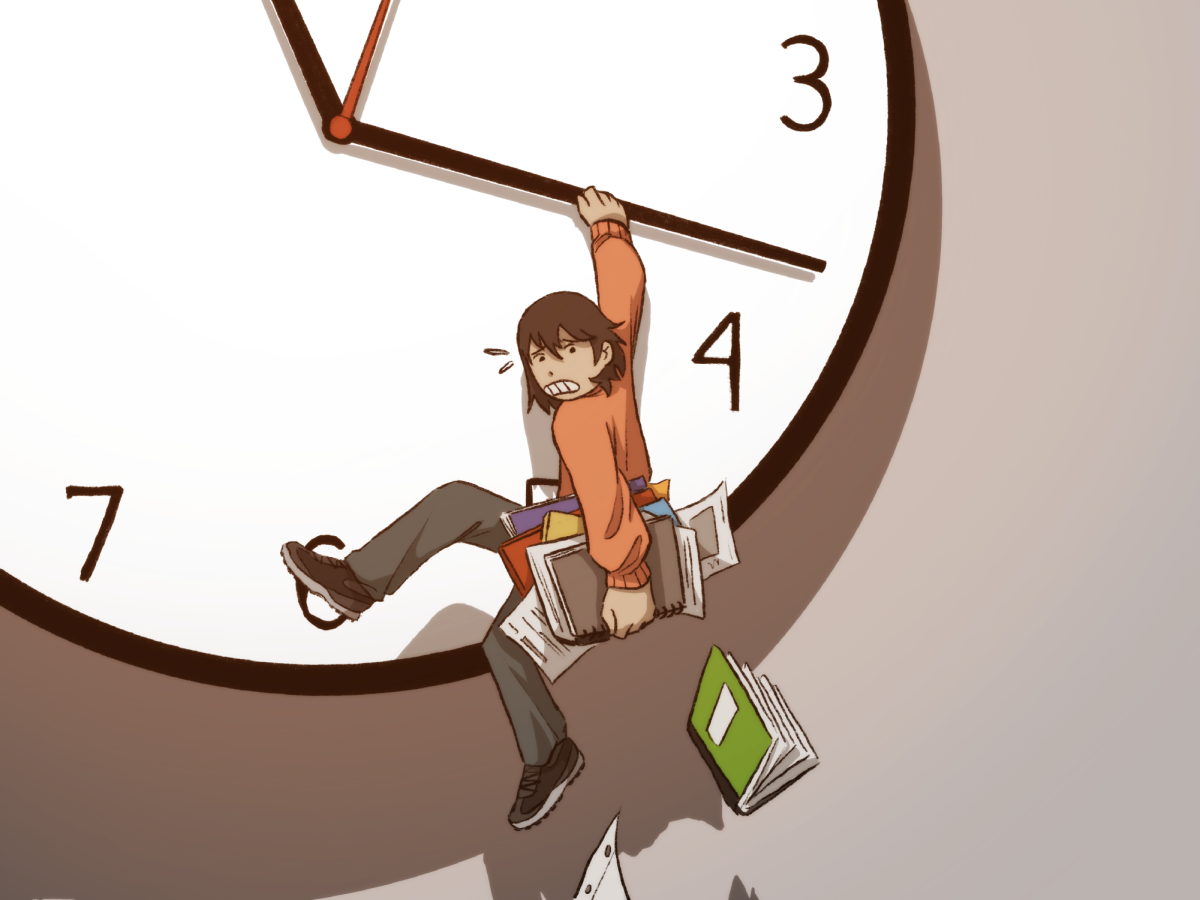For freshmen, walking into ETHS for the first time can be an overwhelming change, but this year everyone in the building had a big change to get used to. As students arrived to their first block classes, they were told to place their phones in the designated phone pocket immediately. This school year, ETHS implemented the “Bell To Bell No Cell” policy, which bans cell phone use from all classrooms and hallways during the academic period. As listed on the ETHS website, cell phones are only to be used in hallways during passing periods, cafeterias, and The Hub during unscheduled blocks.
The policy was implemented to maximize student engagement, limit distractions in the classroom and protect the privacy and safety of students. The logistics of the implementation were relatively straightforward: teachers were provided with the necessary materials by ETHS administration.
“They are providing us with Bell To Bell No Cell posters, phone storage units and more to give a clear vocal message. It’s always been in the pilot that phones aren’t allowed in academic areas, but enforcing it in the hallways during class is a very significant change from years past,” said John Stephenson, a freshman advisory study hall and English teacher.
Stephenson, along with all of the teachers at ETHS, are getting accustomed to the introduction of the new, stricter policy this year. For some, it’s not a difficult change.
“This year, I feel like there is a clear policy in place for managing cell phones. I was given clear instructions about when and where students can and cannot use their phones, and I feel confident enforcing that policy,” said Blaire Rose, a Geometry and Algebra 2 teacher.
In Stephenson’s experience, students have also adjusted well to the routine of putting their phones away.
“I teach freshmen and juniors, and I think freshmen just see it as the thing to do in the first few weeks of class because it’s all they know, so they go right along with it,” remarked Stephenson. “My juniors have also taken to it well. We have gotten into a really nice groove where they understand it’s the rule and they follow along.”
Stephenson and Rose agree that students are more focused in class and interact with each other more without the phones present.
“It’s still early to tell, but I am noticing that because the phones are away, there is more interaction and engagement like we had hoped,” commented Stephenson.
In addition to interpersonal interactions, one of the goals of the policy is to increase performance in academic settings, which Rose believes has the potential to occur.
“I believe that students are more focused and less distracted in class. I also believe that students are more willing to talk to each other when they don’t have their phones in their hands,” she explained.
In some cases, however, students are having difficulty adjusting to the new policy.
Freshman Alice Harper, who was used to a more relaxed policy in her middle school, was surprised when she encountered the severity of the ETHS policy.
“When I first heard about [the ETHS policy], I wasn’t that surprised because I felt like I knew it was coming. But I didn’t expect them to be that strict with it, because putting your phone in the pocket seems a little over the top for high school,” Harper remarked.
Despite expressing disapproval of “Bell to Bell no Cell,” Harper acknowledged that her class environment was also changed for the better without phones.
“Sometimes people were not engaged at all last year, especially if there was a substitute teacher,” she recounted. “But this year, I feel like we are talking to each other and less distracted because we’re not on our phones.”
As a freshman, Harper’s opinion on the policy differs slightly from that of seniors Claire Ross and Rob Rosenthal, who had to adjust after years of experience with the old rules. Ross noted that she was a little annoyed because it made it harder to make plans for lunch and schedule other academic meetings. Rosenthal had similar thoughts about the policy’s impact on scheduling.
“A few of my classmates have complained about trying to make plans right after school or during lunch because they weren’t able to contact [their friends] until after the bell rang, making it more difficult to schedule anything,” said Rosenthal. “It felt like a stupid rule because anyone who is getting distracted by their phone will find something else to distract themselves with if they don’t want to pay attention.”
Though the “Bell to Bell No Cell” policy has been received differently by various ETHS community members, it is something that every teacher and student will have to get used to.















Barbara Loring • Sep 13, 2024 at 12:31 pm
Great article Lily!